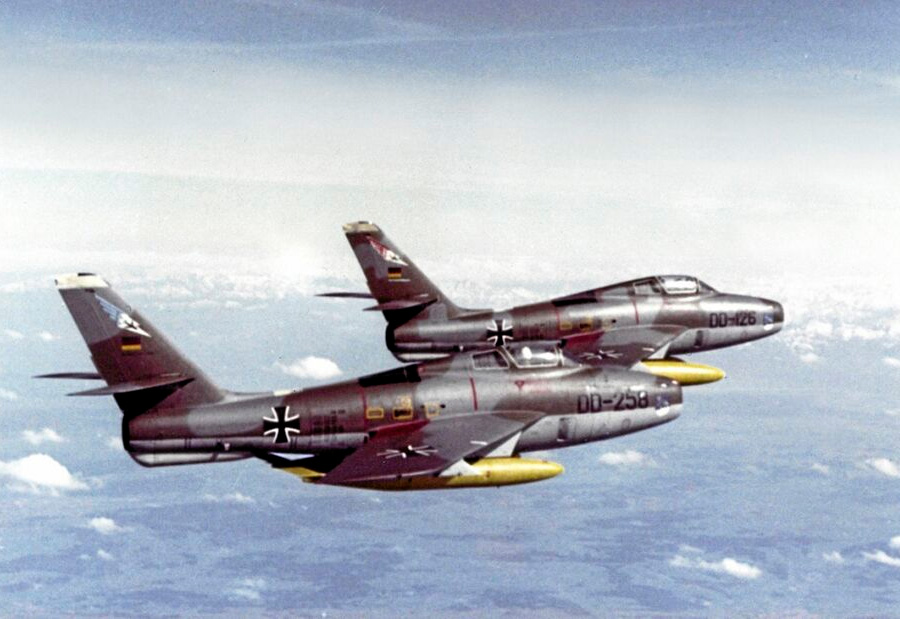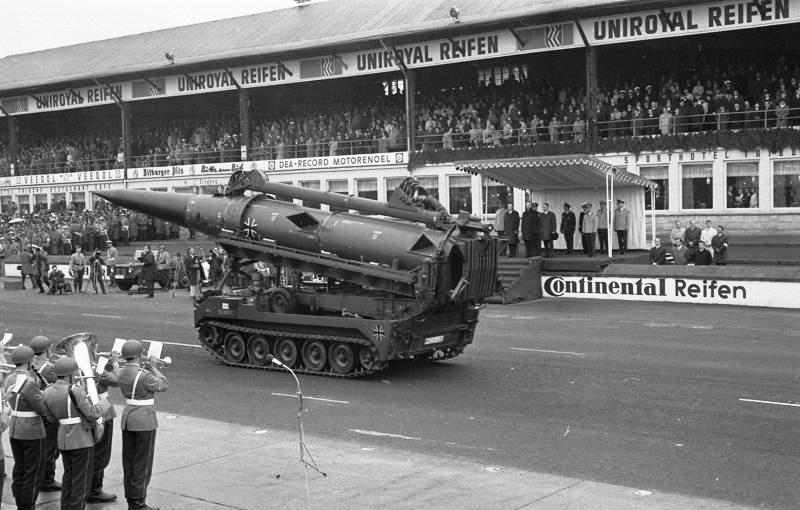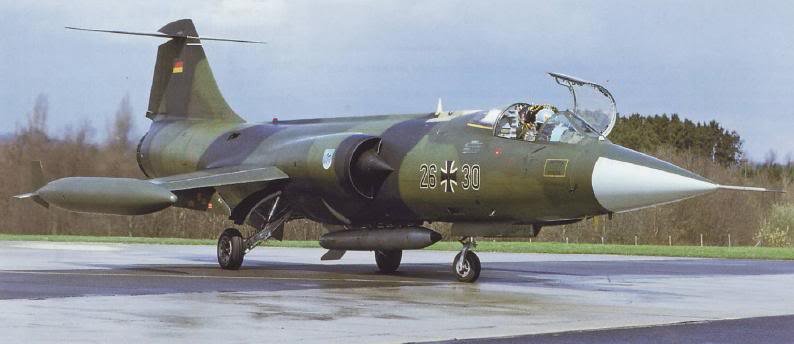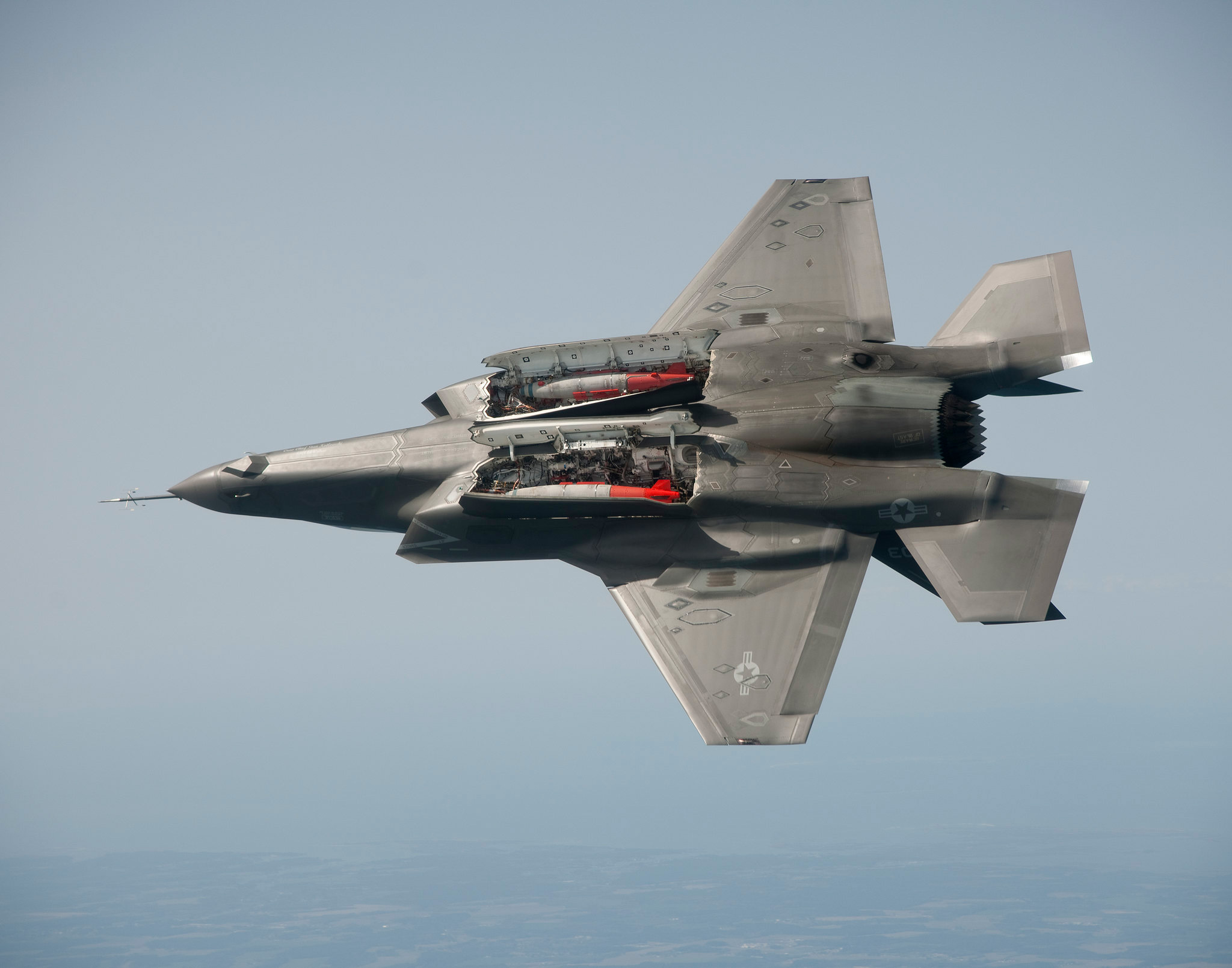Lightning-Speed Deal. Germany to Purchase F-35 for Nuclear Sharing
In
Login if you are already registered
(votes: 18, rating: 4.61) |
(18 votes) |
Research Fellow at the Primakov Institute of World Economy and International Relations under the Russian Academy of Sciences
When Russia launched its military operation in Ukraine, Berlin reacted with a truly lightning speed: the decision to buy F-35A Lightning II without a bidding process came as early as March 14. In late July, the U.S. Administration officially approved the deal. In its Congressional notification, the DSCA estimated 35 F–35A fighters with equipment, spare and repair parts, weapons (including long-range cruise missiles AGM-158B JASSM-ER) and personnel training to cost USD 8.4 bn. Lockheed Martin, the fighter’s manufacturer, suggested that should the contract be signed in the near future, it could deliver first fighters to the Luftwaffe already in 2026.
The German government managed to resolve its predicament by promptly using the changed geopolitical situation. This came as a climax of quite a protracted and a rather tragicomic story of Germany’s Luftwaffe purchasing a new carrier of nuclear weapons to carry out “NATO nuclear sharing.” Thanks to the F-35 purchase, they did everything they could to preserve the desired status quo of American nuclear weapons.
Germany’s leadership is apparently ready and willing to pay for Germany’s semi-nuclear status. Most likely, America’s vestigial nuclear presence will remain in Europe for a long time, until some kind of an exchange deal with Russia, for instance, in the matter of the latter’s TNW (nuclear weapons were likely kept in Europe just for that purpose, as the military value of relatively few free-fall nuclear bombs is small). When the U.S. decides to get rid of these weapons, it will not consult its “privileged allies,” just like it did not consult them in the mid-1950s when deploying nuclear weapons in their country.
In July 2022, the Department of State and the U.S. Defense Security Cooperation Agency (DSCA) approved the sale of F-35A Lightning II multirole combat aircraft to Germany. This came as a climax of quite a protracted and a rather tragicomic story of Germany’s Luftwaffe purchasing a new carrier of nuclear weapons to carry out “NATO nuclear sharing.”
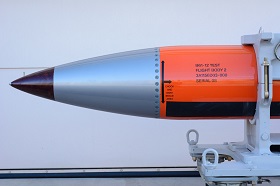
Rifle Hanging on the Wall
The Legacy
Today’s NATO nuclear sharing is a legacy of the Cold War between the U.S. and the USSR, which has effectively evolved into a policy relic over the 30 years that followed. RIAC has already described the history of the program in detail. The first carriers of U.S. tactical nuclear weapons (TNW) in Germany were deployed in October 1953 when the U.S. forces stationed in Germany received first specialized M65 cannons designed to fire nuclear devices. Over a few years, the U.S. Air Force acquired surface-to-surface guided missiles, such as MGR-1 Honest John and MGM-5 Corporal, air bombs, and MGM-1 Matador, the first operational surface-to-surface cruise missile.
Curiously, back then, the U.S. government had no official permission from the German government (and never requested it), such as a ratified international treaty. However, striving to maintain friendly ties and acting out of “intra-alliance politeness,” Chancellor Konrad Adenauer was notified of these steps and of the U.S. army’s readiness to use the TNW in military hostilities waged in Germany in case of war with the USSR, even though the Chancellor was to understand that the U.S., as an occupying power, did not need his consent. However, published documents show that the U.S. was concerned with this matter in view of the future, in case special rights to deploy troops were to be abolished.[1] It should be noted that some interpretations posit the German authorities still may not dispute the U.S. right to deploy its troops.[2] Practically speaking, though, these are legal conflicts: U.S. troops, including nuclear weapons, are deployed in Germany with consent of local authorities, and it can hardly be imagined that they would not be withdrawn should the local authorities firmly demand it. On the contrary, when President Donald Trump announced a redeployment of some U.S. troops to other European states, German and pro-Democrat U.S. media presented it as a tragedy that could undermine U.S.–Germany allied relations and NATO’s solidarity, while the Pentagon was sabotaging this decision until Joe Biden abolished it altogether, something the media painted as a great blessing.
Adenauer’s laid-back attitude to nuclear weapons is easy to explain. In the 1950s, today’s concept of non-proliferation was not yet conceived, and West Germany’s leaders envisaged their country to become a nuclear power in a medium-term outlook [3]—as did, for instance, the leaders of Sweden or Italy. For the time being, allied weapons were enough, especially since the U.S. began steering a course for arming its NATO allies with nuclear weapons in the late 1950s, at least by training them and by providing carriers. In the future, the U.S. seemed intent on establishing “NATO’s united nuclear forces” that were sometimes visualized in rather exotic forms, whether a joint force operating intermediate-range missiles stationed in silos under a glacier in Greenland or joint fleets disguised as transport vessels carrying ballistic missiles or rail-based missile complexes cruising around Europe.
However, more practical work was underway in the late 1950s. In 1958, when NATO Atomic Stockpile program was launched with a view to increasing military capabilities of the allied armies under NATO’s new MC 70 directive, [4] the new Luftwaffe was already receiving U.S. F-84F Thunderstreak bombers, which were largely designed as nuclear bomb carriers. The Department of State’s European Bureau noted in a memorandum of November 1958 that West Germany had ordered “dual purpose” systems—such as MIM-14 Nike Hercules SAM systems, MGR-1 Honest John rockets, and Matador cruise missiles—to be delivered shortly.[5]
With discussions and debates on the issue transpiring in the U.S. itself, the militaries were still engaged in fairly close cooperation, exchanged experience while steering clear of any political discussions and the nascent movement for nuclear non-proliferation. For instance, when inspecting the status of American nuclear weapons in Germany in September 1962, U.S. Defense Secretary Robert McNamara and his colleagues visited a Luftwaffe airbase to discover that “warheads were … stored aboard those aircraft on alert status. The assumption that the German pilots do not know how to arm these warheads turns out to be fictional; on request, one of the pilots showed the U.S. visitors how this was done.”[6] Later, West Germany received several nuclear weapons carriers, including Pershing 1a ballistic missiles with a range of about 740 km, which could strike targets not only in East Germany but also in Poland, Czechoslovakia or Hungary. Later, the Luftwaffe used the U.S.-purchased F-104G Starfighter for nuclear aviation bomb carriers (using a high-altitude interceptor as a low-level strike aircraft largely resulted in its notoriously many crashes) and Panavia Tornado strike fighters, a joint product of Italy, Britain and Germany. Officially, the U.S. military remained in control of all the payloads—in practice, though, both the Bundeswehr and the Luftwaffe would operate in a combat situation as full-fledged nuclear forces within NATO’s allied forces.
A nuclear white elephant
Once the Cold War ended, the presence of U.S. troops in Europe, the armies of its local allies, and local American tactical nuclear weapons were being rapidly reduced. Consequently, America’s European nuclear arsenal was reduced by an order of magnitude. All the TNWs were eliminated, except for B61 free-fall air bombs for army air forces. The U.S. withdrew nuclear weapons from the UK, South Korea, and Japan, and nuclear weapons in other states were significantly reduced. Unofficial estimates claim that there are now about a hundred B61-3 and B61-4 bombs deployed in five states (Belgium, Italy, the Netherlands, Turkey and Germany) at six air bases equipped with special WS3 hangar storage systems.[7]
In Germany, bombs—likely totaling no more than 20 units—are deployed at the Büchel airbase in Rhineland-Palatinate in the country’s southwest. Nörvenich and Ramstein air bases are no longer used for the purpose, even though the latter had 55 WS3 systems, the largest number built in Europe (Büchel only has 11), enough to house up to 220 bombs.[8]
Only the 33rd tactical Luftwaffe wing (Taktisches Luftwaffengeschwader 33, TaktLwG 33) stationed in Büchel is trained in the use of nuclear weapons on Tornado IDS strike aircraft. This unit is among the oldest in the “new” iteration of the Luftwaffe, the first air wing to fly jet fighter bombers (in 1958, they flew the above-mentioned F-84F Thunderstreak); originally, this unit was led by Walter Krupinski, one of the Nazi Luftwaffe’s highest-scoring pilots in World War II.[9] The 702nd Munitions Support Squadron of the 52nd MUNSS services the bombs and trains technicians and pilots. In addition to regular personnel, air base security is provided by a special Luftwaffe ground force unit, “security squadron S” (Luftwaffensicherungsstaffel „S“).
Despite the general public’s predominantly negative attitude and despite populist statements coming from politicians representing several parties (statements these politicians usually “forget” once they come to power, as happened, for instance, with Annalena Baerbock, the Minister of Foreign Affairs from the anti-nuclear Greens), Germany’s military political leadership clearly did not want U.S. nuclear weapons to be withdrawn from the country even before NATO’s current exacerbation in relations with Russia. Otherwise, Germany’s leaders would have achieved it back during the quiet 1990s–2000s, as, for instance, the British leadership did under public pressure. If we look past the perfunctory statements of allied solidarity, Germany’s leadership apparently sees American nuclear bombs as a tool for upgrading Germany’s status within NATO to the “semi-nuclear inner circle,” as well as a means of making its voice louder in the Alliance’s nuclear planning group.
Besides, American and NATO politicians exploit German establishment’s fear of Poland getting excessively strong should Germany “slacken.” For instance, in late 2021, when Germany was discussing American nuclear bombs once again, NATO’s Secretary General Jens Stoltenberg at the Q&A session after his speech at the German Atlantic Association Conference, threatened that should Berlin demand a withdrawal of nuclear weapons they will appear “east of Germany” as part of the U.S. bilateral treaty with some other state (that is, utterly outside NATO’s control).[10] Naturally, in connection with the current public sentiments in NATO states, the launch of Russia’s military operation in Ukraine puts to rest the matter of possible reductions in NATO’s nuclear sharing for the foreseeable future.
Punch line for a long-running joke
For Germany, its continued participation in nuclear sharing was tied to the long-running problem of carrier aircraft. Since the 1980s, the principal (and soon only) carriers of American B61 bombs in European air forces were the F-16 Fighting Falcon multi-role fighters purchased in the U.S. or the Europe-designed Tornado aircraft. Today, the former are used in Belgium, the Netherlands, and Turkey, while the latter are deployed in Germany and Italy. Both aircraft were produced in the 1980s–early 1990s, and they are outdated and old, which suggests they should soon be put out of service.
Four out of five states have already decided to purchase F-35A Lightning II, a fifth-generation multirole stealth aircraft that Washington labels as the principal carrier of B61-12, a thermonuclear bomb that comes as a guided and high-precision update of B61. The “Turkish question” still remains: following Turkey’s purchase of Russia’s S-400 air defense missile system and because of a generally sharply exacerbated relations, Ankara was excluded from the program, and the fighters Turkey had already paid for were “arrested” in the U.S. This question, however, may be resolved in the future, and a purchase of a shipment of newly-made F-16 fighters is now discussed. In any case, there are reports of Turkish pilots having had no training in using nuclear weapons for a long time, while the bombs in Incirlik are the Middle Eastern cutting-edge arsenal for the U.S. air force itself.
It is easy to see that Germany alone was not on this list. Around 2016–2017, Germany was close to buying F-35, but then its relations with Washington cooled off as the United States under Donald Trump sharply criticized Berlin for insufficient defense spending (far below the 2% of the GDP recommended by NATO) and, therefore, for “mooching off” the U.S. in Germany’s security. In such a situation, Germany’s authorities decided—as a matter of principle—to purchase more European-made Eurofighter Typhoon multipurpose fighters.
The story of Luftwaffe Inspector Karl Müllner is utterly tragicomic: the General did not promptly toe the “party line” and continued to insist that F-35 needed to be bought as nuclear bomb carriers and even openly argued with Minister of Defense Ursula von der Leyen. As a result, he was forced to resign amid a scandal in the spring of 2018.
For a while, certifying Eurofighter Typhoon as a nuclear weapons carrier became the master plan for continued participation in nuclear sharing. Airbus was confident it could be done by 2025. Having to be involved in reconfiguring the fighter and willing to have the final say on whether the aircraft was ready, the U.S. began hinting that the process would take longer than Tornadoes would remain in service (and the time need to certify Tornado would “turn out” to be longer than any Tornado’s in-service time named by Germany).
Ultimately, the German government drove itself into a corner and decided in March 2020 to buy Boeing F/A-18F Super Hornet fighter bombers. The purchase of a small number (30) of originally carrier-based aircraft which did not enjoy much popularity on the global market, which were not aligned with Luftwaffe aircraft and with those of its NATO allies, which did not have better combat capabilities than Eurofighter Typhoon (for instance, F-35 is stealth aircraft and would open up new opportunities) looked like a hugely awkward decision Angela Merkel’s government made in a tortured manner for political reasons. It would have looked very silly had it decided to purchase F-35 once again, when it had harshly refused to purchase them two years prior. A small bonus consisted solely in purchasing, together with Super Hornets, 15 EA-18G Growler, EW aircraft (jamming, surveillance, air defense suppression) also designed by the Hornet. Currently, these tasks are carried out by old Tornado ECR aircraft that need to be replaced.
Another comic element in this story is that the Super Hornet has not been designed to carry B61 bombs and is not certified to carry nuclear weapons,[11] but the U.S. hinted that it would deal with that problem much faster. For some reason, arguments that “first, we would need to spend several years reconfiguring it carry F-35” cited against Eurofighter Typhoon have not been brought forward concerning the Super Hornet.
Everyone could easily see how impractical that decision was, and when new leaders came to power in Germany in the fall of 2021, Germans began taking careful steps towards “re-appraising” the possibility of purchasing F-35. The process, however, would have certainly been drawn out over several years since the subject was highly “toxic” both due to the issue of U.S. nuclear bombs as such and on account of the stupid predicament the former government had driven Germany into.
When Russia launched its military operation in Ukraine, Berlin reacted with a truly lightning speed: the decision to buy F-35A Lightning II without a bidding process came as early as March 14. Essentially, it was the first practical step taken to buy additional equipment for the German armed forces. To support German manufacturers, the country decided to buy additional 15 Eurofighter Typhoon in its EW aircraft modification (that is, to finance its development since at the moment this modification is just a concept).
In late July, the U.S. Administration officially approved the deal; legislature is likely to promptly follow suit. In its Congressional notification, the DSCA estimated 35 F-35A fighters with equipment, spare and repair parts, weapons (including long-range cruise missiles AGM-158B JASSM-ER) and personnel training to cost USD 8.4 bn.[12] Lockheed Martin, the fighter’s manufacturer, suggested that should the contract be signed in the near future, it could deliver first fighters to the Luftwaffe already in 2026; Tornado aircraft should last that long.
The German government managed to resolve its predicament by promptly using the changed geopolitical situation. Thanks to the F-35 purchase, they did everything they could to preserve the desired status quo of American nuclear weapons. The Luftwaffe will receive a fifth-generation stealth aircraft used by many of Germany’s NATO allies. Flying F-35 could prove useful for the program of developing forward-looking European FCAS fighter. On the other hand, purchasing F-35 reduces the need for a FCAS and additionally sours relations with France, a partner in the FCAS program, as France insists that Europe rely more on its own forces. Additionally, operating a small number of fighters that are not aligned with the rest of the Luftwaffe’s aircraft fleet will be a very expensive undertaking (unless, of course, Berlin decides, further down the road, to make F-35 one of the Luftwaffe’s main fighters).
However, Germany’s leadership is apparently ready and willing to pay for Germany’s semi-nuclear status. Most likely, America’s vestigial nuclear presence will remain in Europe for a long time, until some kind of an exchange deal with Russia, for instance, in the matter of the latter’s TNW (nuclear weapons were likely kept in Europe just for that purpose, as the military value of relatively few free-fall nuclear bombs is small). When the U.S. decides to get rid of these weapons, it will not consult its “privileged allies,” just like it did not consult them in the mid-1950s when deploying nuclear weapons in their country.
1. For instance, “Gerard C. Smith, Special Assistant to the Secretary for Atomic Energy Matters, ‘Memorandum of Negotiations Looking to Obtain Storage and Use Rights for Atomic Weapons in Western Germany,’” Draft, 12 August 1954
https://nsarchive.gwu.edu/document/20483-national-security-archive-doc-02-gerard-c-smith2. Under the Bonn-Paris Conventions of 1952/54, the US, the UK, and France gave the Federal Republic of Germany much of its sovereignty back, with Germany, however, agreeing to a series of restrictions, including giving up the right to demand a withdrawal of foreign troops. These conventions are to remain in force until the Allies and Germany sign the final peace treaty, yet this treaty has never been and apparently will not be concluded. Under the 1990 Treaty on the Final Settlement with Respect to Germany that largely replaces such a peace treaty, the USSR alone gave up its right to deploy troops in Germany, and NATO undertook not to deploy its troops or nuclear weapons only in the former German Democratic Republic.
3. “Nuclear Weapons and German Interests: An Attempt at Redefinition” PRIF-Report No. 55/2000, p. 6
https://www.hsfk.de/fileadmin/HSFK/hsfk_downloads/prif55.pdf
4. “Supreme Headquarters Allied Powers Europe History 1958” pp. 61-70
https://www.nato.int/nato_static/assets/pdf/pdf_archives/20121126_SHAPE_HISTORY_-_1958.pdf
5. “EUR/RA [Office of European Regional Affairs] Mr. Timmons to EUR [Assistant Secretary of State for European Affairs]- Mr. Merchant, ‘Atomic Armament of Germany,’” 25 November 1958
https://nsarchive.gwu.edu/document/20466-national-security-archive-doc-14-eur-ra-office
6. “S/p [Policy Planning Council] Mr. Owen to G [Deputy Under Secretary of State for Political Affairs]: Mr. Johnson,’ Paul Nitze’s Report on Europe,’” 11 October 1962
7. “United States nuclear weapons, 2022,” Hans M. Kristensen, Matt Korda, 9 May 2022, pp. 176-178
https://www.tandfonline.com/doi/full/10.1080/00963402.2022.2062943
8. “U.S. Nuclear Weapons in Europe. A Review of Post-Cold War Policy, Force Levels, and War Planning,” Hans M. Kristensen, February 2005, p. 13
https://www.nrdc.org/sites/default/files/euro.pdf
9. He is credited with 197 air victories. Krupinski, by that time promoted to the commanding officer of the Luftwaffe, and several other high-ranking officers were told to retire only in 1976, when they, frankly speaking, finally bugged the hell out of civilian authorities with their openly Nazi opinions and insulting behavior toward political leaders of left-wing parties.
10. “I expect that Germany will continue to be part of nuclear sharing because it is so important for the whole of Europe... The alternative to NATO nuclear sharing is different kinds of bilateral arrangements. … Germany can, of course, decide whether there will be nuclear weapons in your country. But the alternative is that we easily end up with nuclear weapons in all the countries of Europe, also to the east of Germany. So I think that nuclear sharing is a balanced, well-organized, tested structure for nuclear deterrence” audio recording (time code 41:30)
https://www.nato.int/cps/en/natohq/news_188783.htm11. It was developed and put into service already after the US carrier-based aircraft completely abandoned nuclear weapons in the mid-1990s.
12. We should note that the DSCA’s notifications are not contracts, and final deals sometimes come with very different packages and costs.
(votes: 18, rating: 4.61) |
(18 votes) |
US tactical nuclear weapons in Europe


